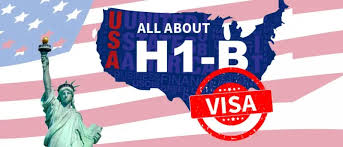Unauthorized Immigrants under Immigration Law
Unauthorized Immigrants under Immigration Law
What is an Unauthorized Immigrant?
An unauthorized immigrant (sometimes referred to as an undocumented immigrant) is a foreign national who enters, resides, or remains in a country without proper legal authorization or valid immigration status. This includes individuals who:
Enter without inspection (i.e., cross the border unlawfully).
Overstay a visa or permit beyond the authorized period.
Violate terms of their visa or status.
Legal Framework Governing Unauthorized Immigrants
In the United States, unauthorized immigration is primarily governed by the Immigration and Nationality Act (INA). Key provisions include:
Section 212(a)(6)(A)(i): Grounds of inadmissibility for unlawful presence or misrepresentation.
Section 237(a)(1)(B): Grounds for deportation (removal) for being present in the U.S. without authorization.
Section 101(a)(13)(C): Defines “unlawful presence.”
Rights and Limitations of Unauthorized Immigrants
Unauthorized immigrants generally do not have legal permission to work, study, or receive certain public benefits.
However, they do have some constitutional protections (e.g., due process under the Fifth Amendment).
They are subject to removal (deportation) proceedings but may apply for relief under certain circumstances, such as asylum or cancellation of removal.
Key Issues in Unauthorized Immigration Law
Entry Without Inspection: Crossing the border without lawful admission is illegal and a basis for removal.
Visa Overstay: Remaining in the country beyond visa expiration leads to unlawful presence.
Removal Proceedings: Unauthorized immigrants are placed in removal proceedings where they may contest deportation or seek relief.
Deferred Action and Prosecutorial Discretion: Some unauthorized immigrants may receive temporary protection from removal (e.g., DACA).
Leading Case Law
Arizona v. United States, 567 U.S. 387 (2012)
The U.S. Supreme Court struck down several provisions of Arizona’s state immigration law aimed at unauthorized immigrants, affirming that immigration enforcement is primarily a federal responsibility. The case clarified federal preemption over state laws regulating immigration and limited the states' ability to enforce immigration laws beyond federal statutes.
INS v. Cardoza-Fonseca, 480 U.S. 421 (1987)
This case concerned asylum eligibility for unauthorized immigrants. The Supreme Court ruled that asylum applicants need to show a “well-founded fear of persecution,” a lower standard than “clear probability,” which influences relief available to unauthorized immigrants fearing return to persecution.
Zadvydas v. Davis, 533 U.S. 678 (2001)
The Court held that indefinite detention of removable aliens (including unauthorized immigrants) beyond a reasonable period violates due process rights. This case limits government authority to detain immigrants indefinitely pending removal.
Plyler v. Doe, 457 U.S. 202 (1982)
This landmark decision ruled that states cannot deny free public education to children based on their immigration status, extending certain constitutional protections to unauthorized immigrant children.
United States v. Brignoni-Ponce, 422 U.S. 873 (1975)
This case addresses the standards for stops and searches of suspected unauthorized immigrants near the border, requiring reasonable suspicion based on race or ethnicity is not enough without other evidence.
Enforcement and Relief
Unauthorized immigrants are subject to removal but may apply for various forms of relief including asylum, cancellation of removal, adjustment of status, or Temporary Protected Status (TPS).
Immigration enforcement includes border patrol, detention, and removal operations, governed by federal agencies such as ICE and CBP.
Summary
Unauthorized immigrants are foreign nationals present in the country without legal authorization. U.S. immigration law imposes grounds for inadmissibility and removal on unauthorized immigrants but also provides limited protections and relief. Federal law preempts most state efforts to regulate immigration enforcement. Key Supreme Court decisions have shaped the balance between enforcement and individual rights of unauthorized immigrants.





0 comments